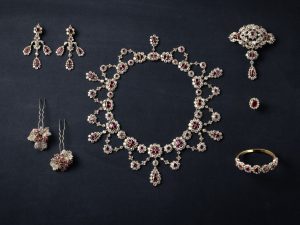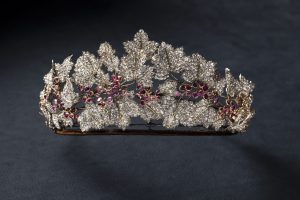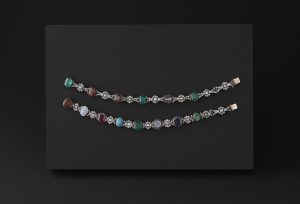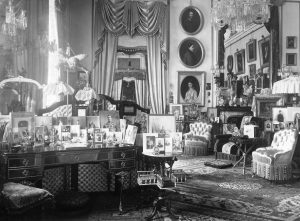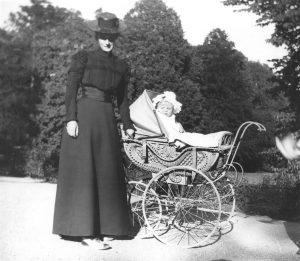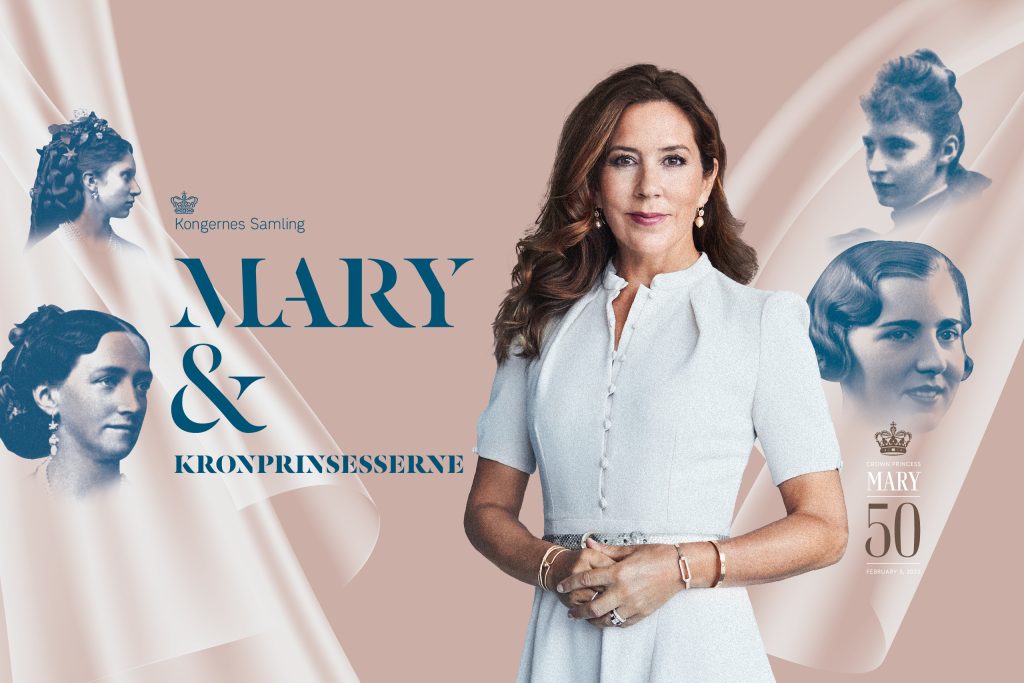
The ruby set and other selected objects
The exhibition includes selected objects, which add new facets to the story of Crown Princess Mary and her predecessors. Some of the exhibits:
The ruby set
The iconic ruby set was first worn at Napoleon’s coronation as emperor in 1804 by Désirée, who later became queen of Sweden. The set came to Denmark in 1869, when her great-granddaughter Princess Lovisa married the Danish Crown Prince Frederik (VIII). As Queen, Lovisa gave it to her daughter-in-law Alexandrine, and in 1935, Crown Princess Ingrid received it as a wedding gift. The set was Queen Ingrid’s favourite for decades, and in her will she left it to Crown Prince Frederik, so that his future wife could wear a jewellery set worthy of a crown princess.
Acrostic bracelets
Frederik VIII’s queen, Lovisa, made important contributions to the Danish collection of crown jewels. She defined the crown jewels as such and established the Danish Royal Property Trust, which ensures that many magnificent pieces of jewellery remain the property of the Royal House. This includes two characteristic bracelets that Lovisa inherited as crown princess. They once belonged to Napoleon’s first consort, Joséphine de Beauharnais, and the coloured gemstones of the bracelets spell out the names of the Empress’s two children of her first marriage, as the initials of the French names of the stones form the names Eugéne and Hortense.
Queen Louise’s writing desk
Queen Louise has traditionally been attributed much of the credit for her children’s advantageous marriages, which earned her and Christian IX the nickname ‘Europe’s in-laws’. Louise naturally conducted her extensive correspondence from several desks, but she may well have worked on her marriage plans at this very desk, even while she was still a crown princess. Today, the desk normally stands in Queen Louise’s Salon at the Amalienborg Museum.
Princess Alexandrine’s pram
Perhaps the principal task for a crown princess has traditionally been to bear children, and thus, the exhibition includes a pram that we know for certain that Princess Alexandrine used for her sons. Alexandrine was not formally a crown princess at the time (she was not attributed this title until 1906, by which time her sons had long since outgrown the pram), but from her arrival, Alexandrine defined the future of the Royal House and was thus crown princess in fact, if not by name.
 Dansk
Dansk
 English
English
 Deutsch
Deutsch

